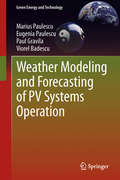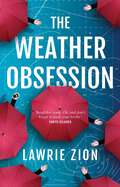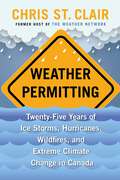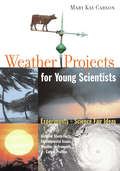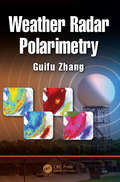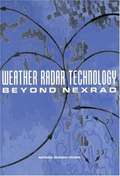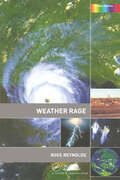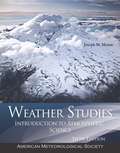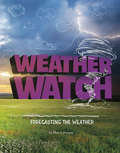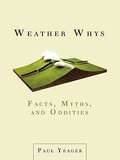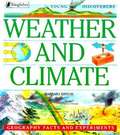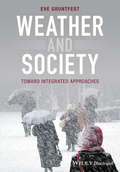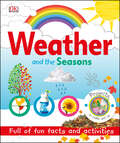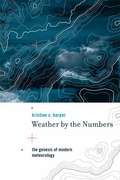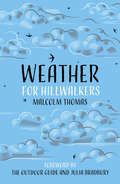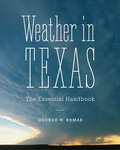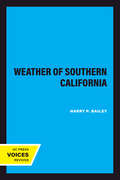- Table View
- List View
Weather Modeling and Forecasting of PV Systems Operation
by Viorel Badescu Eugenia Paulescu Paul Gravila Marius PaulescuIn the past decade, there has been a substantial increase of grid-feeding photovoltaic applications, thus raising the importance of solar electricity in the energy mix. This trend is expected to continue and may even increase. Apart from the high initial investment cost, the fluctuating nature of the solar resource raises particular insertion problems in electrical networks. Proper grid managing demands short- and long-time forecasting of solar power plant output. Weather modeling and forecasting of PV systems operation is focused on this issue. Models for predicting the state of the sky, nowcasting solar irradiance and forecasting solar irradiation are studied and exemplified. Statistical as well as artificial intelligence methods are described. The efficiency of photovoltaic converters is assessed for any weather conditions. Weather modeling and forecasting of PV systems operation is written for researchers, engineers, physicists and students interested in PV systems design and utilization.
Weather Obsession
by Lawrie ZionWe have come a long way since the days when weather information could only be found in the back pages of newspapers. The Weather Obsession takes the temperature of modern weather media and investigates how it has fuelled our fascination with all things climatic.Weather information now pervades everything from our mobile devices to online news and social media, while the Bureau of Meteorology is a daily destination for millions of us. What has made weather so much more than a mere talking point? What happens when this data becomes big business? And what is at stake when it comes to how the media frames our understanding of the relationship between extreme weather and climate change?The Weather Obsession lifts the lid on our insatiable appetite for meteorological media and shows that while we might not have stopped worrying about the forecast, almost all of us have learnt to love the BOM.
Weather Patterns: Severe Storms in Galetown, Investigation Notebook with Article Compilation
by The Lawrence Hall of ScienceNIMAC-sourced textbook
Weather Patterns: Severe Storms in Galetown, Investigation Notebook with Article Compilation
by The Lawrence Hall of ScienceNIMAC-sourced textbook
Weather Permitting: Twenty-Five Years of Ice Storms, Hurricanes, Wildfires, and Extreme Climate Change in Canada
by Chris St. ClairFrom the longtime host of The Weather Network comes a behind-the-scenes look at Canada&’s biggest weather events and climate phenomena.For more than twenty-five years, Chris St. Clair was on the frontline of Canada&’s biggest weather events as a popular presenter on The Weather Network. For the first time, he shares his never-before-told stories covering the country&’s most astounding weather events. From the flooding of the Red River in Winnipeg to the ice storm in Montreal, the hurricanes in Newfoundland, the devastating wildfires in Fort McMurray, the hailstorm in Calgary, and the heat dome and horrifying floods in British Columbia, St. Clair recalls these extreme weather events and relays their impact on communities across the country. He also follows Canadian snowbirds south to Florida and recounts their dramatic escape from record-breaking Hurricanes Matthew and Irma. A vivid personal narrative with accessible scientific explanations and meteorological analysis, Weather Permitting tells the story of how the weather has shaped the character and psyche of our nation, and is an homage to the strength and resilience of Canadian communities from coast to coast.
Weather Projects for Young Scientists: Experiments and Science Fair Ideas
by Mary Kay CarsonFrom the everyday phenomena of wind and clouds to the awesome, destructive power of lightning, tornados, and hurricanes, children can explore weather in detail with this fascinating science activity book. Throughout the text instructions for building weather-measuring tools--barometers, psychrometers, anemometers, wind vanes, rain gauges, and thermometers--allow the reader to assemble them into a working weather station. More than 40 weather projects are included, such as building a model of the water cycle, creating a tornado in a bottle, calculating dew point, and reading a weather map. Most of the experiments also include ideas for expanding them into full-fledged science fair projects. Weather-related environmental issues are also addressed, such as global climate change, ozone depletion, and acid rain, as well as profiles of scientists working in the field of meteorology.
Weather Radar Polarimetry
by Guifu ZhangThis book presents the fundamentals of polarimetric radar remote sensing through understanding wave scattering and propagation in geophysical media filled with hydrometers and other objects. The text characterizes the physical, statistical, and electromagnetic properties of hydrometers and establishes the relations between radar observables and physical state parameters. It introduces advanced remote sensing techniques (such as polarimetric phased array radar) and retrieval methods for physical parameters. The book also illustrates applications of polarimetric radar measurements in hydrometer classification, particle size distribution retrievals, microphysical parameterization, and weather quantification and forecast.
Weather Radar Technology: Beyond Nexrad
by Committee on Weather Radar Technology Beyond NEXRADA report on Weather Radar Technology
Weather Rage (Science Spectra)
by Ross ReynoldsSome atmospheric disturbances produce the kind of extreme weather events making the national and international new headlines on a regular basis. Just about everyone is interested in knowing more about hurricanes, typhoons and tornadoes. There is often confusion about whether or not they are the same thing and whether, for example, we can control th
Weather Shamanism: Harmonizing Our Connection with the Elements
by David Corbin Nan MossCreating an alliance and working partnership with the spirits of weather to restore well-being and harmony to Earth and ourselves • Reveals that, intentionally or not, we affect the weather not only through our actions but also through our thoughts and emotions • Explains shamanic techniques for working with the spiritual nature of weather • Special section on “weather dancing” details both its ceremonial and therapeutic aspects With the growing consensus that global warming is a fact comes the realization that the increasingly violent weather we are experiencing is its chief manifestation. Each storm, each flood, each blizzard seems to break 100-year-old records for both intensity and damage. Reducing emissions of greenhouse gases may be too little, too late. Through a unique blend of anthropological research, shamanic journeys, and personal stories and anecdotes, Moss and Corbin show how humans and weather have always affected each other, and how it is possible to influence the weather. They present teachings directly from the spirits of weather that show how our thoughts and emotions affect weather energetics. They also reveal the ceremonial and therapeutic aspects of “weather dancing,” a practice used to communicate with the weather spirits.Weather Shamanism is about transformation--of ourselves, and thus our world. It is about how we can develop an expanded worldview that honors spiritual realities in order to create a working partnership with the spirits of weather and thereby help to restore well-being and harmony to Earth.
Weather Studies: Introduction to Atmospheric Science (Fifth Edition)
by Joseph M. Moran"The American Meteorological Society (AMS), founded in 1919, is a scientific and professional society. Interdisciplinary in its scope, the Society actively promotes the development and dissemination of information on the atmospheric and related oceanic and hydrologic sciences. AMS has more than 14,000 professional members from more than 100 countries and over 175 corporate and institutional members representing 40 countries. The Education Program is the initiative of the American Meteorological Society fostering the teaching of the atmospheric and related oceanic and hydrologic sciences at the precollege level and in community college, college and university programs. It is a unique partnership between scientists and educators at all levels with the ultimate goals of (1) attracting young people to further studies in science, mathematics and technology, and (2) promoting public scientific literacy. This is done via the development and dissemination of scientifically authentic, up-to-date, and instructionally sound learning and resource materials for teachers and students. AMS Weather Studies, a component of the AMS education initiative since 1999, is an introductory undergraduate meteorology course offered partially via the Internet in partnership with college and university faculty. AMS Weather Studies provides students with a comprehensive study of the principles of meteorology while simultaneously providing classroom and laboratory applications focused on current weather situations. It provides real experiences demonstrating the value of computers and electronic access to time-sensitive data and information. "
Weather Watch: Forecasting the Weather (Weather and Climate)
by Ellen LabrecqueWeather affects us every day. How do we know what the weather will be like where we live? How can we prepare for it? Find out the science behind weather observation and prediction.
Weather Whys
by Paul YeagerThe myths, history, wives-tales, oddities, and wonders of a subject that comes up every day: the weather. Weather enthusiasts (or just the weather-curious) will discover surprising facts, myths, and oddities in this fascinating book of useful (and sometimes useless) information. With his expertise as a meteorologist and editor, Paul Yeager takes readers on a journey through the curious world of weather, revealing myths and misconceptions, sharing weird phenomena, and explaining how weather has affected history. Readers will discover a host of fascinating weather facts, including: ?Which city is actually the windiest ?How the temperature affects tire pressure ?Why humidity makes hair go limp or frizzy ?Why a coming storm causes sore joints ?Why watering a garden after it rains is a good idea .
Weather Words and What They Mean
by Gail GibbonsDifferent words describe different kinds of weather. Find out and learn all the different meanings.
Weather Words and What They Mean (New Edition)
by Gail GibbonsA perfect introduction to how we talk and think about the weather.Everyone talks about the weather, but what does it all mean? In clear, accessible language, Gail Gibbons introduces many common terms--like moisture, air pressure, and temperature--and their definitions. Simple, kid-friendly text explains the origins of fog, clouds, frost, thunderstorms, snow, fronts, hurricanes, reinforcing the explanations with clear, well-labeled drawings and diagrams. Newly revised, this edition of Weather Words and What They Mean has been vetted by an expert from the National Oceanic and Atmospheric Association. Best of all, the book features a fun list of weird weather facts!
Weather and Climate (Young Discoverers)
by Barbara TaylorThis book is an introduction to weather and climate, discussing world climates, seasons, violent weather, weather pollution, and the elements of changing weather.
Weather and Society: Toward Integrated Approaches
by Eve GruntfestWeather and Society: Toward Integrated Approaches provides the first interdisciplinary approach to the subject of weather and society. This guide to the evolving set of problem-solving approaches to weather’s societal issues successfully integrates social science’s techniques, concepts and methodologies into meteorological research and practice. Drawing especially on the work of the WAS*IS workshops (Weather and Society * Integrated Studies), this important reference offers a framework for starting to understand how the consideration of societal impacts can enhance the scientific disciplines that address the scope and impacts of weather, particularly meteorology. Filled with tools, concepts, case studies and helpful exercises, this resource: Lays the groundwork for conducting interdisciplinary work by learning new strategies and addressing typical challenges Identifies leaders of the movement to integrate social science and meteorology and highlights their contributions Includes discussion of such tools as Geographic Information Systems, survey design, focus groups, participatory research and interviewing techniques and concepts Reveals effective integrated research and applications though real-world examples in a global context Helps to identify ways to pursue research, application, and educational opportunities for integrated weather-society work Weather and Society is a hands-on guide for academics, students and professionals that offers a new approach to the successful integration of social science concepts and methodologies into the fabric of meteorological research and practice.
Weather and Water Resources: Images, Data and Readings
by Associates FOSS Middle School Project StaffThe book presents the weather and water resources around the world with images and related data and readings.
Weather and the Seasons (Projects to Make and Do)
by DKNature-loving and crafty 3-5 year olds will love learning all about weather in this charming crafty science book.From sun and snow, to thunder and lightning, children will find out what goes on up in the sky, and why. They'll discover simple answers to difficult questions: What makes a rainbow? Why do the seasons change? With vibrant photography and playful illustrations, Weather and the Seasons introduces geography in a way that's fun and accessible to early learners. Then they can get creative and explore weather and seasons further with simple hands-on crafts and activities, bringing the information to life. Children will love making an ice suncatcher and seeing how it melts, or making their own weather vane to check wind direction. Amazing facts combined with fun activities reinforce information while also boosting memory, brain development, and dexterity.
Weather by the Numbers: The Genesis of Modern Meteorology
by Kristine HarperKristine Harper tells the story of the transformation of meteorology from a guessing science into a sophisticated scientific discipline based on physics and mathematics.
Weather for Hillwalkers
by Julia Bradbury Malcolm Thomas The Outdoor GuideFor years hillwalkers and climbers have struggled to understand the complexities of weather systems. Written by a professional weather forecaster, Weather for Hillwalkers provides invaluable insight to the beginner and veteran alike.Now in a new edition, Malcolm Thomas offers an understanding of the principles of the elements – the causes of wind, rain, snow, cloud, fog, thunder and clear skies – and looks at how they are affected by mountains and high ground. Readers will learn the terminology of depressions, warm and cold fronts, air masses and more; how to interpret weather maps; and how to make short-term weather forecasts from observations. This is essential reading for those tackling the elements amongst the hills.
Weather in Texas: The Essential Handbook
by George W. BomarOnly in Texas could a snowstorm pelt the Panhandle at the very moment abrasive dust is scouring the Permian Basin while searing heat is wilting the Winter Garden region in the south. The state&’s large size and central location within North America subject it to a great variety of weather occurrences. Texas state meteorologist George W. Bomar has been observing Texas weather for nearly half a century, and in Weather in Texas, he provides the essential guide to all of the state&’s weather phenomena. Writing in lively layman&’s language, Bomar fully explains both how the weather works and how Texans can prepare for and stay safe during extreme weather events. He describes the forces that shape Texas weather from season to season, including the influence of tropical cyclones, frontal boundaries, El Niño, and the polar jet stream. Bomar puts specific weather events in historical context, using a ranking system to illustrate how recent droughts, snowstorms, hurricanes, flash floods, and tornadoes compare with those of previous generations. He also includes comprehensive tabulations of weather data for every area of Texas, quantifying what constitutes &“normal&” weather, as well as the extreme limits of variables such as low and high temperatures, rain days, snow accumulations, and earliest and latest freezes. With everything from the latest science on climate change and weather modification to dramatic stories about landmark weather events, Weather in Texas is a must-have reference for all Texans..
Weather of Southern California (California Natural History Guides #17)
by Harry P. BaileyThis title is part of UC Press's Voices Revived program, which commemorates University of California Press’s mission to seek out and cultivate the brightest minds and give them voice, reach, and impact. Drawing on a backlist dating to 1893, Voices Revived makes high-quality, peer-reviewed scholarship accessible once again using print-on-demand technology. This title was originally published in 1966.
Weather of the San Francisco Bay Region (2nd edition)
by Harold GilliamAn introduction to the many factors which contribute to the unique weather of the San Francisco Bay region.
